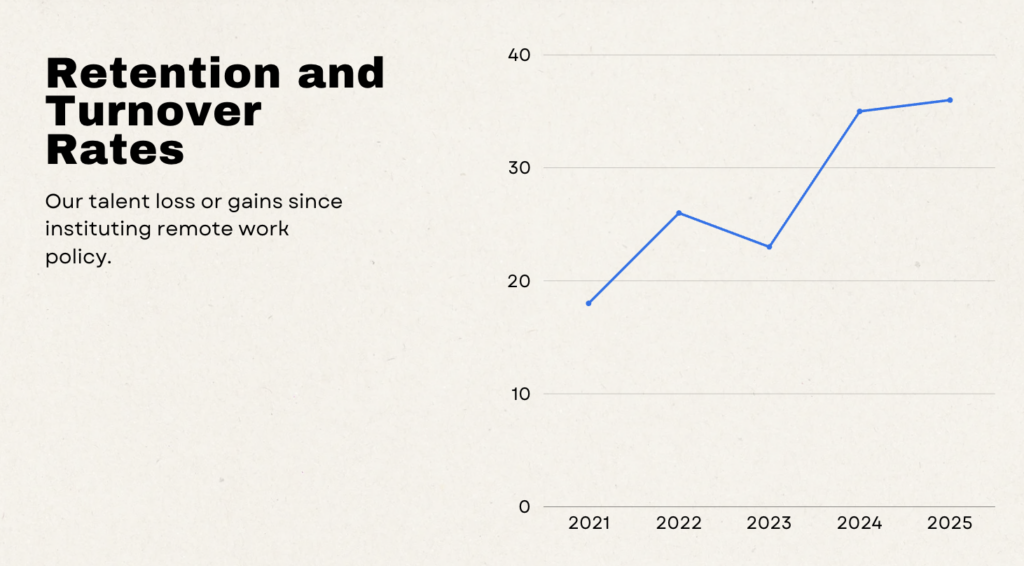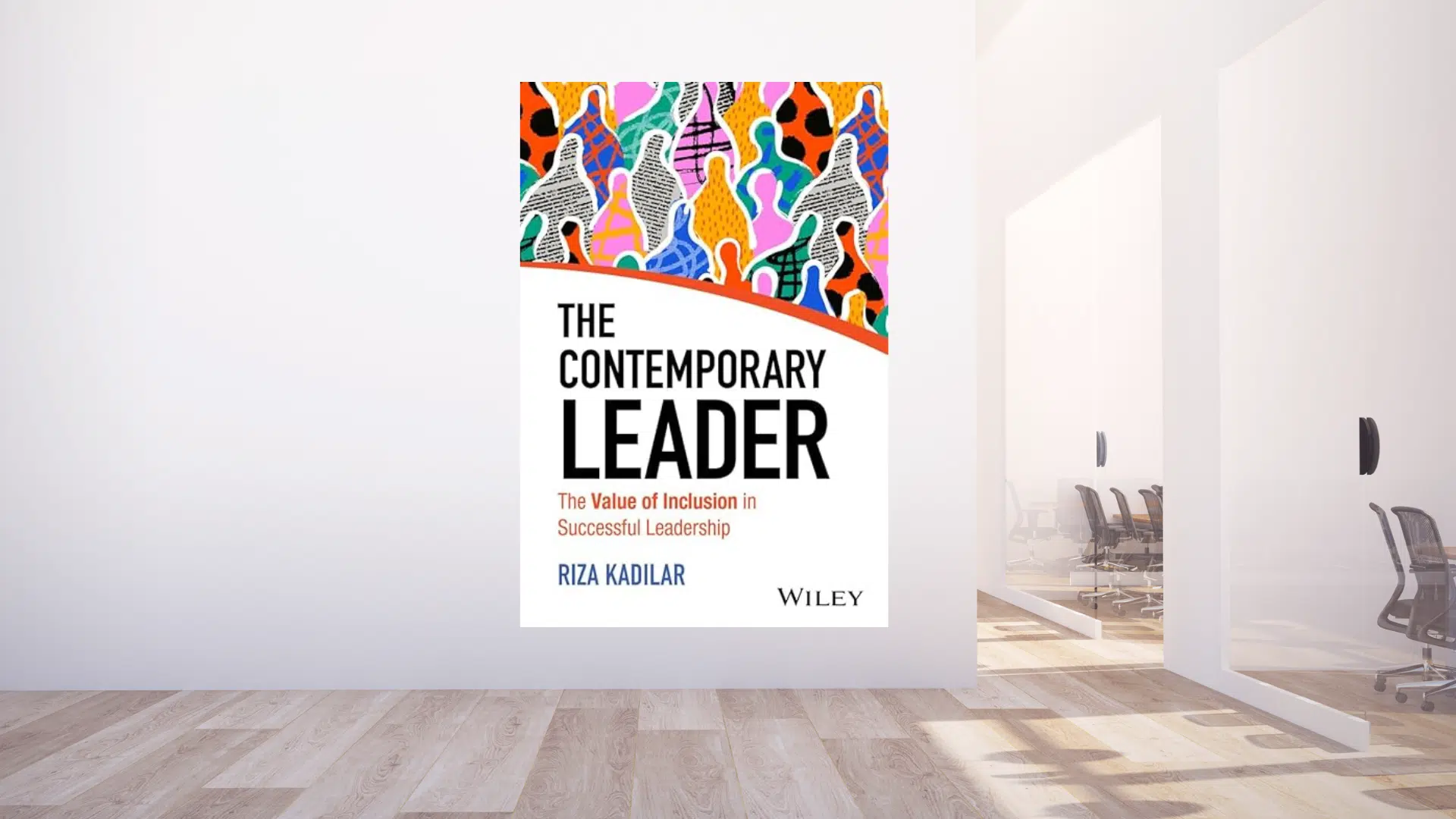
How to Get Leadership Buy-In for Challenging HR Initiatives
We’ve all been there. The CEO makes a rash decision for the entire company, and we know as HR professionals it will affect morale, employee engagement, and most likely increase turnover.
Most HR managers don’t have the authority to alter CEO decisions, but are there other ways you can influence them?
The nature of the HR role is challenging, because it asks the position to manage metrics that are out of their control, such as employee retention. But if the leadership team understood the negative repercussions to their people-centric decisions, would they think differently? HR is in a unique position to offer insights for leaders to understand the positive and negative results of their actions.
As HR spends the majority of their time drowning in administrative work, it’s hard to find time to develop new initiatives for the company. But when you combine AI, with the power of tools like Canva, it can be easier than you think to communicate effectively with leadership, get buy-in for your ideas, and share the responsibility for the consequences of company-wide decisions.
Recent Company-wide Initiatives That Impact HR
1. DEI
This hot topic of conversation has been plaguing HR professionals since Trump’s Executive Order came out in January. Even after the courts ruled that Trump’s order can’t extend to the private sector, employers are still spooked. One consultant mentioned he was recently hired to take out any reference to “diversity, equity, and inclusion” in their 100 page operational manual.
HRs know the impact of these decisions. The language that is now being cut from manuals isn’t only about DEI, but about workplace discrimination. Title VII of the Civil Rights Act prohibits employment discrimination based on race, color, religion, sex, and national origin. Removing inclusive language related to race, sex, and gender, impacts policies created to ensure companies are in legal compliance with the 1964 law.
We also know the impact ending diversity programs and cutting inclusive language can have on talent attraction (specifically for Gen Z). But how can we convince our leadership team that these issues matter and how it will eventually impact the bottom line?
Leaders, like the rest of us, are caught in a reaction state. It’s our job to help them understand the impact of those decisions. It doesn’t mean they will change those decisions, but at least they will have all the information to understand the repercussions and the expected fluctuations in metrics after those company-wide decisions have been made.
2. Return to Office Initiatives
Another initiative plaguing HR professionals is return to office initiatives. California Gov. Gavin Newsom’s recent return to office mandate required workers to return to the office four days a week following President Donald Trump’s order calling hundreds of thousands of U.S. federal government employees back to their offices full-time on January 20. Over the past two quarters, the percentage of companies requiring three days per week in office increased to 28% from 19%.
HRs are on the frontline of the impact battling protests and email complaints. Many CEOs have either offered incentives or punishment when employees have refused these requirements. But at what cost? Remote and hybrid schedules have made work-life balance easier for many Americans, but company leaders say productivity and collaboration have suffered. HRs know returning to work is a morale disaster waiting to happen and requiring strict enforcement will only make it harder to retain talent.
Navigate Complex Company-wide Decisions by “Putting the Problem on the Board”
Besides stating the obvious repercussions for your leadership team, what tools can HR use to influence or bring insight into company-wide decisions? The secret lies in “putting the problem on the board.” This is a strategy used by many consultants to navigate tough conversations.
Making the problem visible to your leadership team through data visualization in an approachable presentation keeps things objective. It eliminates decision-making based on whose opinion or position is more valuable in the company. Including metrics that are a result of these changes also helps to create accountability in leadership for decisions that negatively impact HR metrics. When you connect the dots for leaders, you empower them with all the information at hand—including how it will impact their bottom line.
Does HR Have the Time for New Initiatives?
According to Deel, more than half of HR departments are understaffed. As a result, 57% of HR professionals report working beyond normal capacity. HR staff spends as much as 57% of their time on administrative tasks. How much time does that leave for new initiatives, obtaining buy-in from stakeholders, or furthering existing HR initiatives? Zero.
The solution is found in AI, and it’s easier to implement on non-confidential information than HRs think. For tasks that don’t include personal protected information (PII), ChatGPT can provide you with a draft of a plan, complete with all the information you need to put the problem on the board. AI tools are great starting points combined with your expertise to make them true to your circumstances.
How to Write the Best AI Prompts
Experts say the number one rule for prompts is to be as specific as you can. If you know the details of what you want to include, pair that with the size and location of your company and the result is your draft for your idea will be much closer to what you imagined, customized for the culture and size of the company you are working in.
Take our initiative for Title VII, the result looked like this download.
The outline includes:
Title VII Compliance & Inclusive Workplace Initiative
Proposal for Leadership & Stakeholders
I. Executive Summary
II. Business Case for Inclusive Hiring & Non-Discrimination
a. Why Inclusive Hiring Matters
b. Competitive Advantage of Non-Discrimination Policies
III. Why Title VII Compliance is Critical
IV. Proposal: Implementation of a Title VII Training Plan
a. Training Objectives
b. Key Training Components
c. Delivery Methods
V. Implementation Plan & Timeline
VI. Key Metrics & Success Indicators
VII. Call to Action & Next Steps
AI not only gives you the exact components you need to convince stakeholders, but also gives you a draft of what a mock plan would look like to help you speed up planning.
As this template gives you the nuts and bolts, presenting it is the real game-changer. Presenting your initiatives with metrics puts the problem on the board. Canva makes this easy to put all this information into a visual presentation that is approachable and informative. With its drag-and-drop interface, this tool is very user-friendly. In these examples, we took both AI generated outlined initiatives and used the copy that AI generated to put into our presentation.
You can also use these presentations to revisit well after a decision has been made. Let the metrics tell the story. This keeps the problem off of you to convince or share the right metrics to influence stakeholders. Once you have the presentation, scheduling quarterly metric check-ins with your leadership team can also help build this type of decision-making into high-risk decisions that will impact morale, engagement, and retention.
Download the presentation for Title VII and Return to Office and use these as a template to edit for your next presentation.
Bringing these metrics forward in an approachable visual format not only gives your team the right information from a human capital standpoint, but can demonstrate the repercussions of high-risk decisions that can greatly impact your hardest metrics, like retention and morale.
HR initiatives require the buy-in of stakeholders to move forward. Understanding the repercussions of human capital on the business’s bottom line can be one of the most important things the role can do to support balanced decision-making.
The information contained in this site is provided for informational purposes only, and should not be construed as legal advice on any subject matter.

Advice in Your Inbox
Join our newsletter for free bi-monthly toolkits and downloads on how to hire, support, and retain your best talent.







